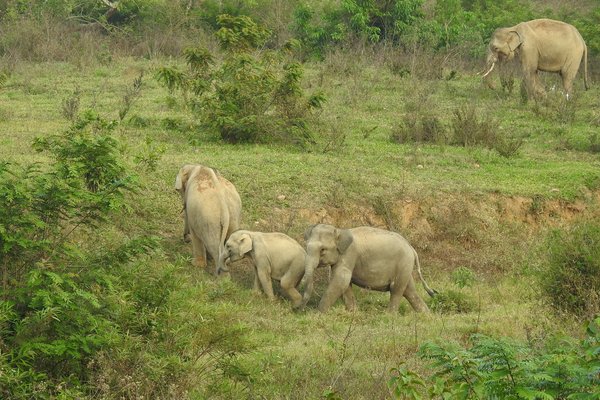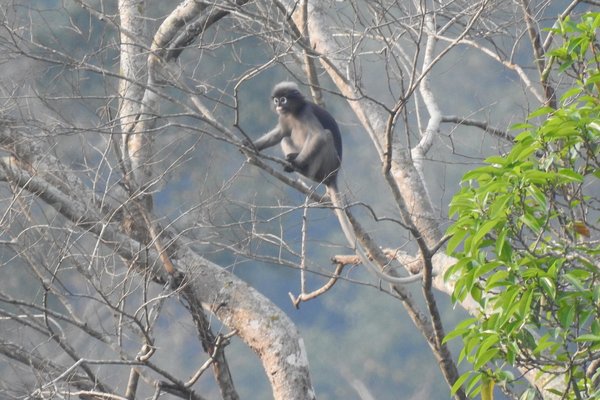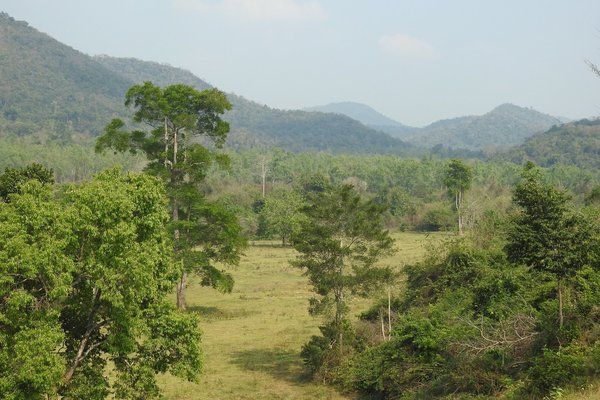Thailand
Kaeng Krachan Forest
Kaeng Krachan Forest Complex is a vast forest area that contains fauna and floral species from different zoogeographical realms and floristic provinces.
It lies on the Thai side of the Tenasserim Ranges, which form the border with Myanmar. The continuous complex comprises Mae Nam Phachi Wildlife Sanctuary, Kaeng Krachan National Park, Kui Buri National Park, and Chaloem Phrakiat Thai Prachan National Park. Important populations of a range of species such as the Siamese crocodile and Sunda pangolin (both critically endangered) and Banteng, Asian elephant, tiger, and Asiatic wild dog (all endangered) inhabit these forests.
Community Perspective: Solivagant describes a self-drive visit entering the park from the North, while Bernard and Els covered Kui Buri National Park. For the latter, expect an “Indian-style safari” with large congregations of tourists.
Site Info
Official Information
- Full Name
- Kaeng Krachan Forest Complex (KKFC) (ID: 1461)
- Country
- Thailand
- Status
-
Inscribed 2021
Site history
History of Kaeng Krachan Forest
- 2021: Advisory Body overruled
- IUCN advised Deferral.
- 2021: Inscribed
- Inscribed
- 2019: Referred
- 2019: Advisory Body overruled
- From Deferral to Referral, via a specific working group during the WHC
- 2016: Referred
- 2015: Referred
- Type
- Natural
- Criteria
- x
Links
- UNESCO
- whc.unesco.org
- Official
-
- tourismthailand.org — Tourism Thailand
- Related
-
- thainationalparks.com — Private site about Thai National Parks
All Links
UNESCO.org
- whc.unesco.org — whc.unesco.org/
Official Website
- tourismthailand.org — Tourism Thailand
Related Resources
- thainationalparks.com — Private site about Thai National Parks
Community Information
- Community Category
- Natural landscape: Forest
Travel Information
Recent Connections
-
Golden jackal
Golden jackal (Canis aureus) in Mae Na…
-
Extension Supported
"Encourages the State Party to identify… -
Plant WHS not in a CPD
"The property is home to a large number…
Connections of Kaeng Krachan Forest
- Geography
-
-
Disputed territories
Dispute Borderline between Thailand and Myanmar which caused 15% reduction of original proposal sites to avoid border issue.
-
- Ecology
-
-
Elephants
Asian elephant -
Bovines
Gaurs -
Tiger habitat
Remarkably, it is also home to eight cat species: the endangered tiger (Panthera tigris) .. (official description) -
Crocodiles
Siamese crocodile -
Orchids
home of unique Gastrodia Fimbriata Suddee and other 174 varieties of wild orchid -
Otters
Smooth Coated Otter -
Rainforests
-
Tapirs
Malayan Tapirs -
Turtles and tortoises
Yellow/Elongated Tortoise (Indotestudo elongata), and the endangered Asian Giant Tortoise (Manouria emys),
-
Critically endangered fauna species
Siamese crocodile (500-1000 remaining) -
Golden jackal
Golden jackal (Canis aureus) in Mae Nam Phachi WS (Nomination file, p. 16)
-
Eagles
Short-toed Eagle, Grey-headed Fish-Eagle, Black Eagle, Crested Serpent-Eagle, Rufous-bellied Eagle, Changeable Hawk-Eagle, Mountain Hawk-Eagle, White-bellied Sea-Eagle (Nomination file, p. A31-32) -
Bears
Asian black bear (Ursus thibetanus) and sun bear (Helarctos malayanus) (Nomination file, p. 24) -
Pangolin
Sunda Pangolin (Manis javanica) (AB Ev) -
Bird Migrations
"March to April is the most ideal time when bird migration into the park is at its peak and continues a bit until June/July when birds take care of their hatchlings."
-
- World Heritage Process
-
-
Controversial at inscription
Norway disassociated itself from the decision to inscribe the site, due to human rights issues
-
Inscribed on a single criterion only
X -
Inscribed at third attempt or more
Inscribed after 3 Referrals -
Extension Supported
"Encourages the State Party to identify opportunities to collaborate with the State Party of Myanmar in transboundary conservation and management of the highly significant nature conservation values of the region, with a view to consider a future extension of the property;" (Decision 44 COM 8B.7) -
Reduced from broader TWHS
From an area of 482,225 ha to an area of 408,940 ha, "a reduction of slightly more than 15% compared to the original nomination". (Ab Ev) -
Potential Transboundary sites
Tanintharyi Forest Corridor in Myanmar (AB Ev)
-
- Religion and Belief
-
-
Legends and Folk Myths
The "ethnic group Karen believe this is unsuitable place according to the beliefs of Chinese's Feng Shui, similar to [the] Bermuda Triangle."See en.wikipedia.org
-
- Human Activity
-
-
Indigenous groups expelled
"Karen communities who are asking to be allowed to return to their traditional homelands from which they were evicted since 1996" (AB ev) -
Traditional Hunting
Karen Communities is permitted to reasonable hunt in NP -
Natural sites with indigenous human population
Karen communities
-
- WHS on Other Lists
-
-
Plant WHS not in a CPD
"The property is home to a large number of threatened and rare plant species, some of which are extinct elsewhere." (OUV) - The AB ev says it is located in a CPD, possibly EA58 Limestone flora? -
Biodiversity hotspot
Indo-Burma, Bangladesh, India and Myanmar -
ASEAN Heritage Parks
Kaeng Krachan National Park (2003)See en.wikipedia.org
-
- Timeline
- Visiting conditions
-
-
Foreigner prices
At Kaeng Krachan NP: Locals 60B/Foreigners 300B. At Kui Buri NP: Locals 40B/Foreigners 200B.
-
News
No news.
Recent Visitors
Visitors of Kaeng Krachan Forest
- Alex Goh
- Bernard Joseph Esposo Guerrero
- Bram de Bruin
- Christravelblog
- Dagmara
- Els Slots
- Erik Jelinek
- Fan Yibo
- Frederik Dawson
- Harald T.
- Jana and Matt
- Janos
- Joyce van Soest
- KarenBMoore
- Luis Filipe Gaspar
- Lukasz Palczewski
- Michael Ayers
- Pat Martin
- Roman Bruehwiler
- Solivagant
- Stanislaw Warwas
- SymonMajewski
- Taotao Chen
- Thomas Buechler
- Timonator
- Zoë Sheng
- Zos M
Community Reviews
Show full reviews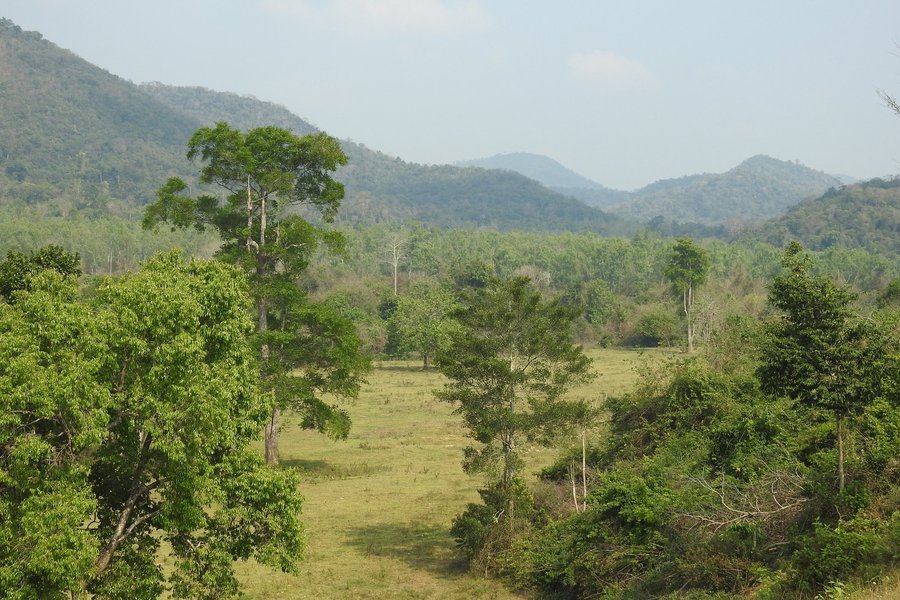
For my ‘tick’ of the Kaeng Krachan Forest Complex, I chose Kui Buri National Park. Kui Buri (sometimes also spelled as ‘Kuri Buri’) was established only in 1999 after tensions between wild elephants and villagers escalated. The elephants’ former habitat had been taken over by pineapple plantations. The park now offers daily 'elephant safaris', where, with a bit of luck, one can observe the wild elephants from a distance. The WWF is still active here to further reduce human-elephant conflict.
The park lies about 1h15 from the pleasant seaside resort of Hua Hin. I used HuaHin Taxi for the return transfer – they are easy to communicate with and know the drill at Kui Buri. The wildlife viewing area is open to entering daily between 2 and 5 p.m. (though you will leave towards 6 p.m.) and requires hiring a 4WD truck and guide at the ticket office.
We arrived at 2.15 and I was driven into the park immediately. The noisy truck drove quite fast on the sandy roads and it was clear that we wouldn’t be seeing much along the way. They will bring you to one of the two main viewpoints, where you disembark and the waiting begins. These viewpoints are major tourist congregation sites, not the lovely camouflaged watchtowers that they use in Huai Kha Khaeng. Eventually, some 15 trucks and 50 tourists showed up at this viewpoint, the furthest. This clearly was an Indian-style safari, not a serene African one.
I barely even saw …
Keep reading 0 comments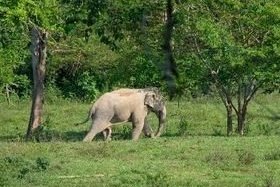
As the previous two reviews focused on Kaeng Krachan NP, I'm sharing here my experience in visiting Kui Buri NP last March 10, 2022.
My friend and I stayed in Prachuap Khiri Khan (PKK) for a few days and thought of ticking off Kui Buri from there. Not only is PKK closer to the NP than from Hua Hin, I also felt that PKK offered more both in natural and cultural sceneries. We gathered that the only way to conveniently get to either the park's HQ or the Wildlife Viewing Area was by renting a taxi for 2000 Baht (half day). Unfortunately, the local tourism office-recommended travel agency that used to offer tours no longer exists because of the pandemic. As Kui Buri is only 55 kms away, we thought that we could do it on a rented motorbike, which we eventually did. Not only was it doable, it also made it possible to first visit in the morning the karst landscape of Khao Sam Roi Yot NP --- probably the more impressive one of the two nearby national parks!
Here is a summary:
1. Wildlife Watching Area is only open from 2pm to 6pm, with the last visitor admission at 4pm. Entrance is 200Bt, and safari truck is 850Bt -- you cannot enter using your own vehicle. The entrance certainly does not fail in informing visitors that it is a "UNESCO World Heritage Site since July 26, 2021." From the park's HQ, it will still take …
Keep reading 0 comments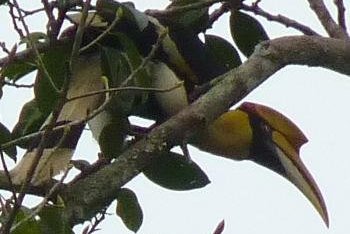
Kaeng Kratchen Forest Compex (KKFC) consists of 5 contiguous parks and reserves (including Kaeng Kratchen NP) situated along Thailand’s border with Myanmar at the very top of the Malay Peninsula which, together, have been badged as a “complex” for this nomination. KKNP itself figures significantly in commercial birding and butterfly tours in Thailand. Such specialist tours, however, allocate several days to the park and the big question for us was whether we could gain value from a much shorter visit as part of a whistle-stop tour by self-drive car of Thailand’s inscribed and tentative list sites.
A further incentive was that a KKFC nomination had been considered at both the 2015 and 2016 WHCs and was still “alive” after consecutive referrals. Even though we had already taken in Thailand’s 2 existing natural WHS (at Kao Yai and Huai Kha Khaeng) the possibility of a future inscription was enough to tip the balance in favour of a visit to a third!
The previous 2 visits had already shown us that Thailand’s natural WHS don’t give out their “value” very easily and KKFC wasn’t particularly different. The iconic mega-fauna is difficult to see in a forest environment within a short visit and the birdlife is best seen at dawn and dusk which means either staying inside the park (if allowed) or at least arriving very early and departing as late as the rules will allow (i.e just after sunset at best), leaving the rest of a very hot day to …
Keep reading 0 comments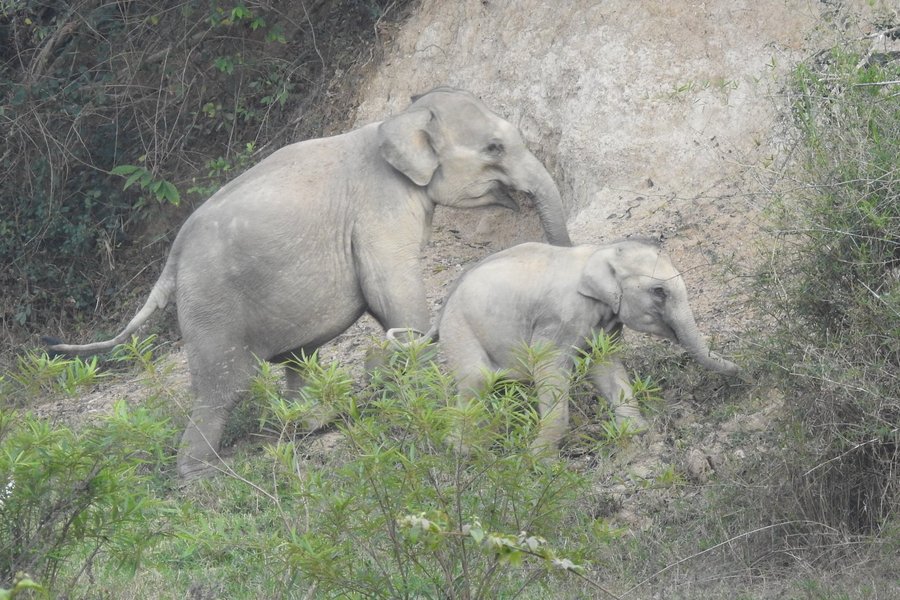
The forest is so beautiful especially Phaneun Thung on the top of the mountain. It's really worth to wake up 3AM and get over there. The scence is wonderful. You can see through Myanmar. Just one point, the tribe people in side the forest could threat to the forest as they kill wildlife animal and cut the trees. The government should find new land for them and move them out the forest.
Keep reading 0 comments
